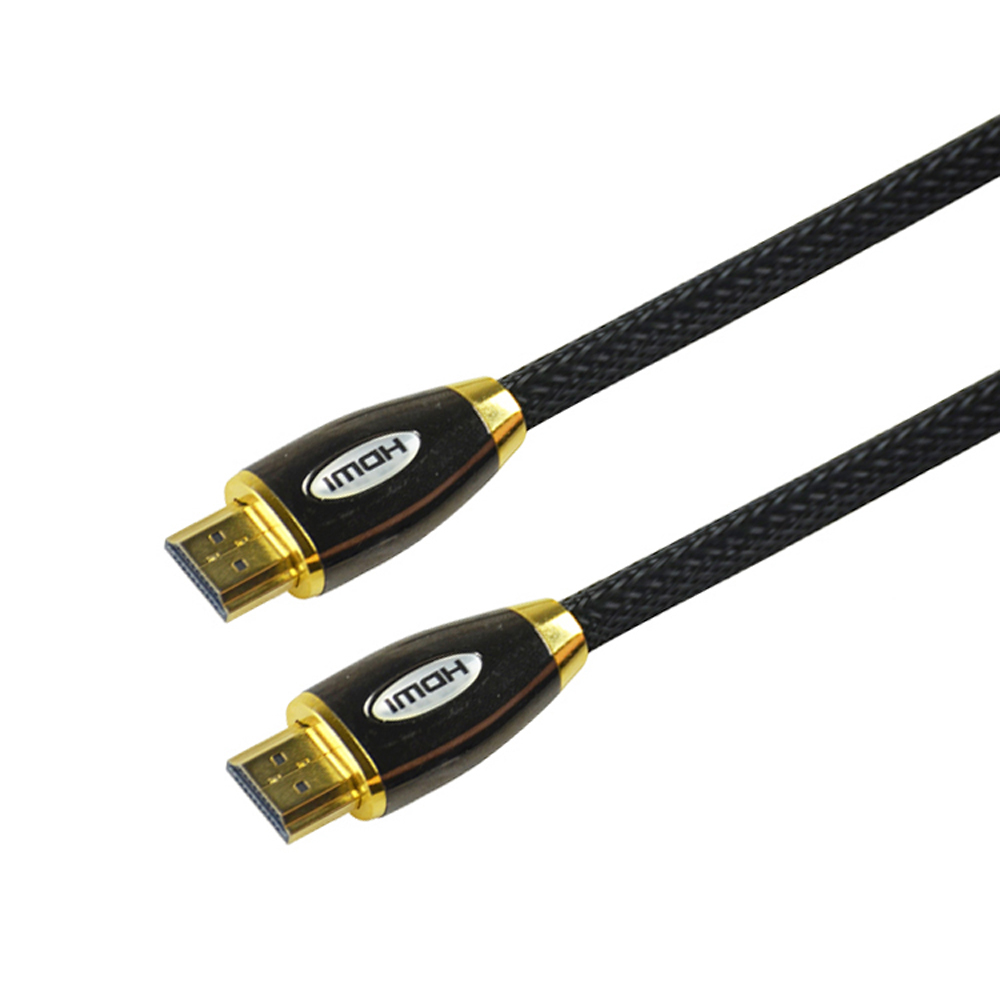HDMI AM cable HDMI cable outer packaging "HDMI 1.3 / 1.4 / 2.0 / 2.1" commonly has these markings. The larger the number, the higher the quality and the more detailed image effects can be transmitted. These specifications are product certifications issued by professional certification agencies.
Versions and specifications: HDMI standards are constantly updated, and versions include HDMI 1.4, HDMI 2.0, HDMI 2.1, etc. Newer versions typically support higher video resolutions, higher refresh rates, and other advanced features.
Resolution and bandwidth: If your device supports 4K or 8K video, make sure your HDMI cable has enough bandwidth to support these high resolutions. Choose cables labeled High Speed HDMI or HDMI 2.0/2.1, these versions usually support higher data transfer rates.
Length: The length of the HDMI cable may affect the signal quality. Longer cables may require better shielding and signal strengthening technology to ensure stable transmission of video and audio. When choosing, consider the distance between your devices and choose the appropriate length of cable.
Shielding and materials: Good shielding helps reduce external interference and ensures clear video and audio transmission. Metal casing and high-quality conductor materials also improve signal quality.
Flexibility and Durability: Flexible wires are easier to install and manage, especially in tight spaces. At the same time, the durable housing and connectors provide longer service life.
Supports additional features: If your device requires additional features, such as Ethernet data transmission, audio return channel (ARC), etc., make sure the cable you choose supports these features.
The bandwidth upgrade of HDMI cables is of great significance to provide more cutting-edge specifications. Bandwidth represents the amount of data transmitted per second, usually measured in Gbps (Gigabits per second). A higher bandwidth means that the cable can transmit more data, allowing for higher resolution and more detailed imaging.
As the bandwidth increases, the image effects also improve accordingly:
1080p to 4K: As the bandwidth of digital transmission increases, you can increase the resolution of the picture from 1080p to 4K. This means the number of pixels in each frame is greatly increased, resulting in more detailed images and clearer details.
Higher refresh rates: Greater bandwidth also means you can achieve higher refresh rates. The high refresh rate not only makes dynamic images smoother, but also enhances the realism and superior performance of videos and games.
HDR technology: High-bandwidth HDMI cable supports dynamic HDR technology, which can present richer colors and wider contrast in images, making the images more realistic and vivid.
8K resolution: High-bandwidth cables can achieve 8K resolution video transmission. This ultra-high-definition picture quality not only performs well on a large screen, but also provides a larger display area, making the image more shocking.
Overall, the bandwidth upgrade of HDMI cables can provide more data transmission, which is critical to achieving higher resolution, higher refresh rate and more advanced imaging technology. When the number is larger, it means that the wire can process a larger amount of data, thereby presenting a better image in terms of visual effects.
HDMI 2.1 was released in November 2017, significantly increasing the bandwidth to 48 Gb/s.
This standard uses "Display Stream Compressions" technology to achieve 4K ultra-high image quality at 120Hz, and can even use display stream compression to support 8K or 10K ultra-high image quality at 30Hz or higher. .
In addition, HDMI 2.1 supports more upgraded high dynamic range imaging (HDR) and variable refresh rate (VRR),
The ARC specification has also been upgraded to eARC, which can be used for Dolby Atmos and DTS:X audio formats, and an ultra-high-speed HDMI cable type has been introduced to meet the needs of high-speed transmission.
The dynamic HDR of HDMI 2.1 can be optimized for the number of scenes or frames, especially the game experience will be better. The X box Series X home game console can support HDMI 2.1. Although the HDMI 2.1 specifications have been released, various factories have not yet started mass production. Currently, the most popular versions on the market are HDMI 2.0 and 1.4!
★ Variable refresh rate (VRR): Smooth transition from one frame to another, eliminate visual tearing or jitter between frames, and reduce freezes and flickers.
HDMI conditions
You may think that as long as I connect all devices to HDMI 2.1 cables, I can achieve the highest picture quality. Although
All HDMI specifications are backward compatible, that is, HDMI 2.1 is backward compatible with HDMI 2.0, which means you can use your new TV with old external devices. But if your screen is 2K, even if you connect an HDMI 2.1 cable, it will not bring you the 2.1 standard picture quality. You must have the corresponding version of the device interface and cable to get the audio, resolution, and audio that the specifications should have. The picture shows it perfectly!

EU regulations will start in 2024 for smartphones, iPad tablets, speakers, digital cameras, headphones, game consoles, e-book readers, mice, keyboards, and other electronic products
All must adopt Type-C (USB-C) charging standards and protocols. Laptops sold in the EU in 2026 must also be equipped with Type-C (USB-C) ports to reduce electronic waste and allow consumers to use them. more convenient.
Safety/Quality Approvals: Quality system meets ISO 9002 standard & UL verification





















